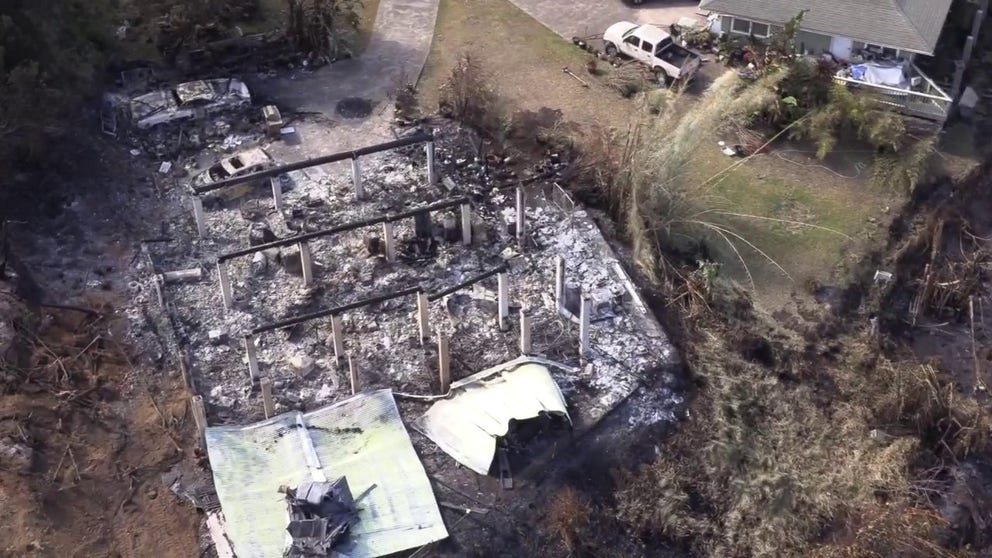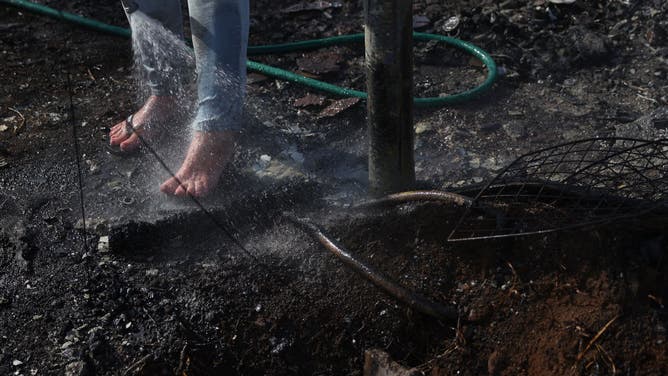Ash pits hide dangerous burning embers even after wildfires are extinguished
Someone walking among a wildfire burn scar may have no idea they are about to step into an ash pit and suffer burns to their legs and feet.
Watch: Aerial footage shows scope of devastating destruction after wildfire in Kula, Hawaii
The Hawaii Department of Land and Natural Resources released aerial footage above Kula, Hawaii, that shows the scope of devastation after wildfires raged across Maui.
Hiding in the burned debris from brush and wildfires are dangerous ash pits containing burning embers that can burn firefighters and those searching through the rubble for belongings.
After the deadly Maui wildfires, the Hawaii Red Cross warned Maui residents returning to search among the debris of the dangers that remain even days after a fire is extinguished, including ash pits. Other risks remain, including live embers and smoldering debris.
Ash pits are hidden from the surface but are holes underneath ash and mud, concealing ash and hot embers. Someone walking among a wildfire burn scar may have no idea they are about to step into an ash pit and suffer burns to their legs and feet.
According to the U.S. National Wildfire Coordinating Group, environmental factors can increase the risk of ash pit formation after a fire. Root systems from trees and shrubs, animal dwellings such as small rodent holes and landscapes manipulated by heavy equipment can be high-risk areas for ash pits.
An Oregon firefighter explained how he was burned stepping into an ash pit during the 2019 wildfire season.
"With the ash pits, we see the scorched ground where all the vegetation has burned off, and you don't see it looking any different, and it kind of just collapses under your feet," Oregon Crew 10 firefighter Joe Kerrig said.
One step too heavy in the wrong direction could mean stepping into a hot ash pit about a foot deep.
Because ash pits are virtually undetectable from the surface, wildland firefighters use Thermal Imaging Cameras to detect the heat hiding below or use poles to stick into the ground and find the pits. The cameras can also help firefighters find and extinguish lingering hot spots.







